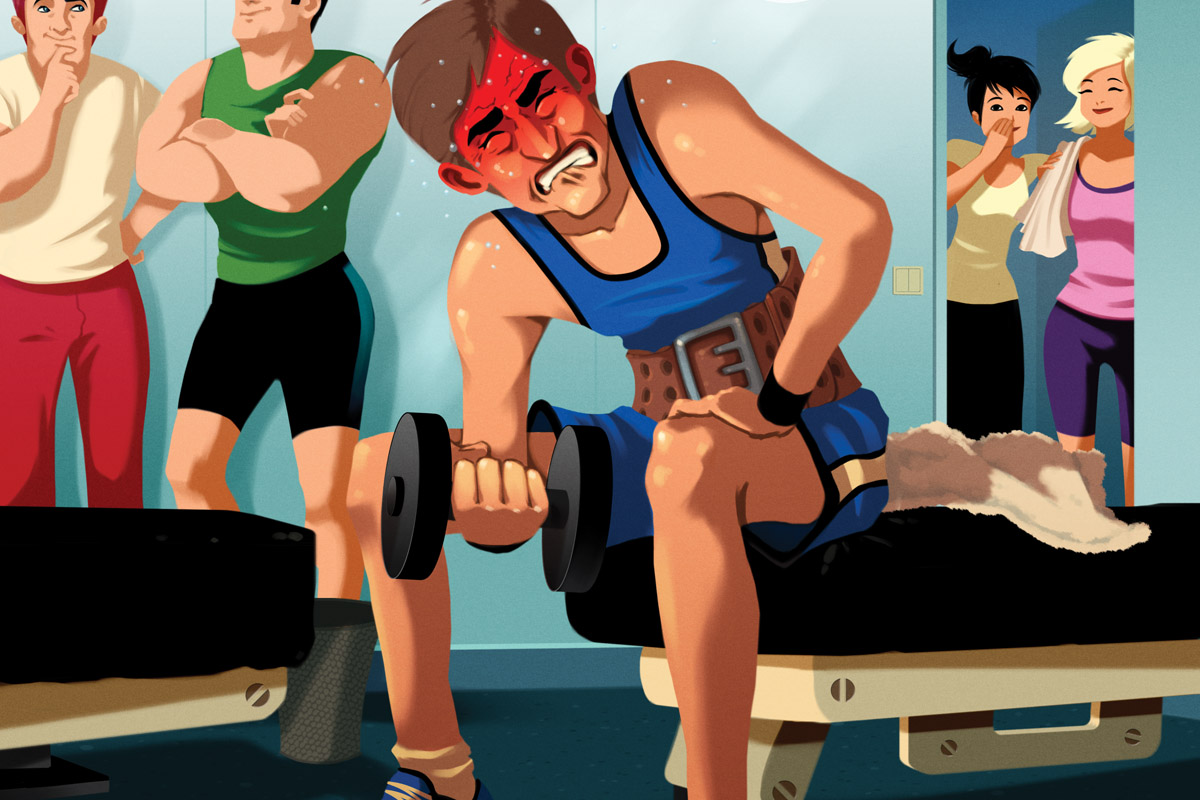9 Outdated Training Beliefs
Sometimes it's good to go old school, but sometimes it's old for a reason. Old-fashioned exercise myths exposed...

1. Always wear a weightlifting belt
“Wearing a weight-training belt for non-maximal lifts has shown to decrease the body’s ability to recruit the muscles that stabilise the spine,” says trainer Joel Proskewitz (thestrengthcompany.co.uk). “They can help keep your core braced during maximal compound lifts, but too many people wear belts when sitting on a bench for a biceps curl exercise, which is ridiculous. Strengthening your core through planks and deadlifts is the best way to keep the spine stable all the time.”
2. To lose weight, train in the fat-burning zone
It’s true that there is only one way to lose weight, but exercising in the fat-burning heart rate zone – around 65% of maximum heart rate, so that almost all the calories you burn come from fat – isn’t it. “You need to burn more calories than you consume. That’s how you shift fat, regardless of the activity or intensity,” says performance consultant Karl Bickley (fit2race.co.uk).
3. Fat turns into muscle
“Fat and muscle are two very different tissue structures and you can’t transform one type into another,” says Proskewitz. “However, building muscle tissue will facilitate the accelerated burning of fatty tissue, making you leaner and stronger.”
4. Exercise before eating
The theory goes that it’s best to train on an empty stomach, because this creates a calorie deficit that speeds up your metabolism for the rest of the day. “The best time to train is when you have time to train hard and effectively,” says Bickley. “Research suggests that the best time is between 5pm and 6pm when our body temperature is highest, but I’d advise you to train when you find it best suits you.”
5. Running is bad for the knees
An 18-year study at Stanford University in the US found it was non-runners who were more likely to suffer osteoarthritis, a painful degenerative joint disease, than those who ran regularly. The findings suggest that pavement-pounding can strengthen the connective tissues that stabilise the knee joint, preventing pain in the long term.
6. Muscle is all about genetics
“Your unique blueprint for how you look is genetic: for instance, you have no control over bone structure,” says Dr Nick Evans, a consultant orthopaedic surgeon (drnickevans.com). “But even though you are born with a fixed number of muscle fibres, you can make your muscles bigger through regular strength training.”
See related :
7. Training hard risks a heart attack
Men who train strenuously for 2hr 20min each week reduce their chances of having heart problems by 40%, according to a study in the Canadian Medical Association Journal. However, lifting heavy weights or holding static moves can raise blood pressure. The Blood Pressure Association recommends people with high blood pressure should only lift weights under supervision of a qualified trainer.
Get the Coach Newsletter
Sign up for workout ideas, training advice, reviews of the latest gear and more.
8. No pain, no gain
“The muscles must work hard during exercise and the ‘good’ pain you feel from muscle burn is necessary for growth,” says Proskewitz. “But this pain should be tolerable. Any pain that is too much to bear indicates that you are pushing too hard and is likely to result in injury.”
9. Lift light and long to improve muscle tone
“There’s no such thing as training for muscle tone, but you can train to increase muscle size and burn the fat that covers the muscle,” says Proskewitz. “Lifting a heavy weight fewer times will build muscle and burn fat, helping you look leaner.”
Coach is a health and fitness title. This byline is used for posting sponsored content, book extracts and the like. It is also used as a placeholder for articles published a long time ago when the original author is unclear. You can find out more about this publication and find the contact details of the editorial team on the About Us page.

